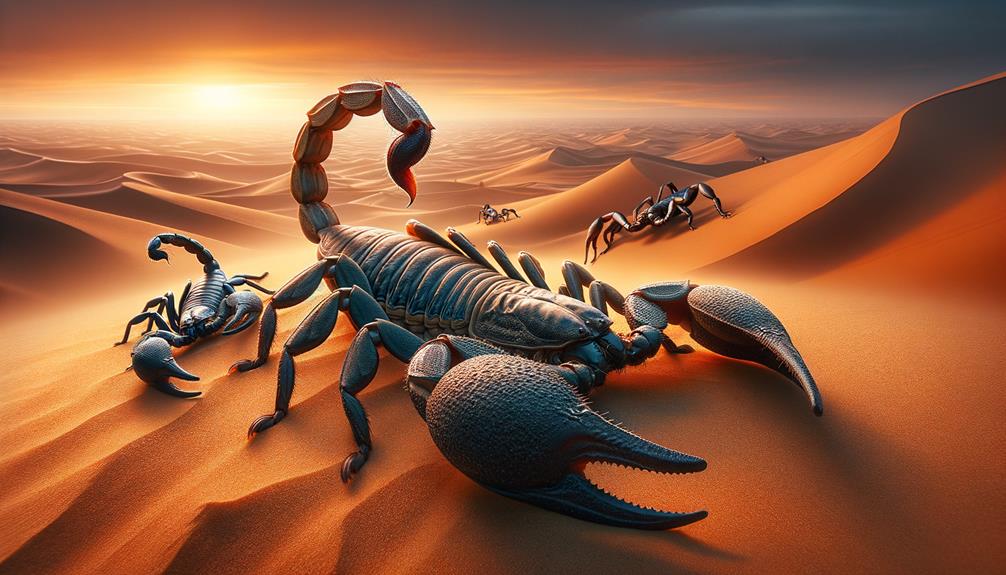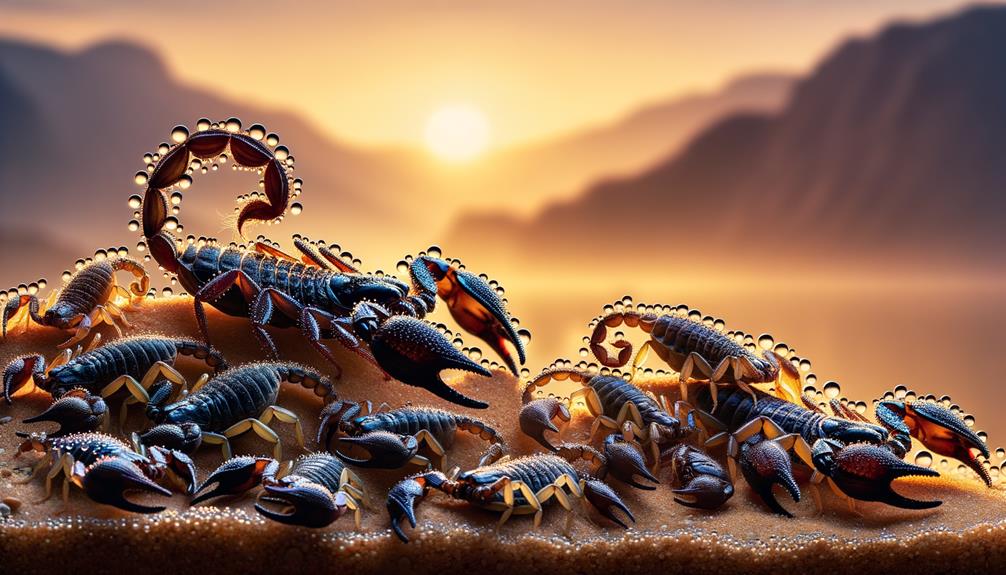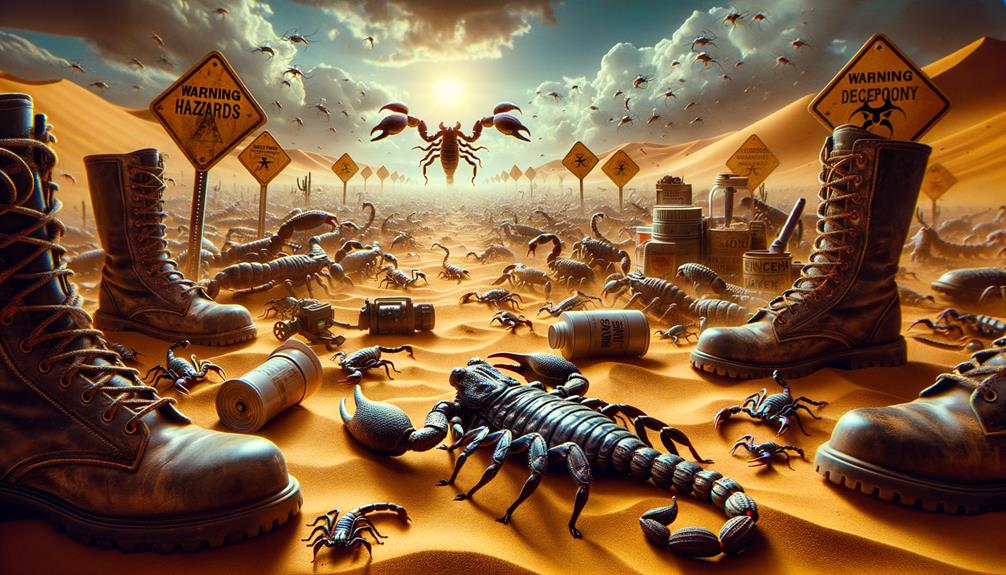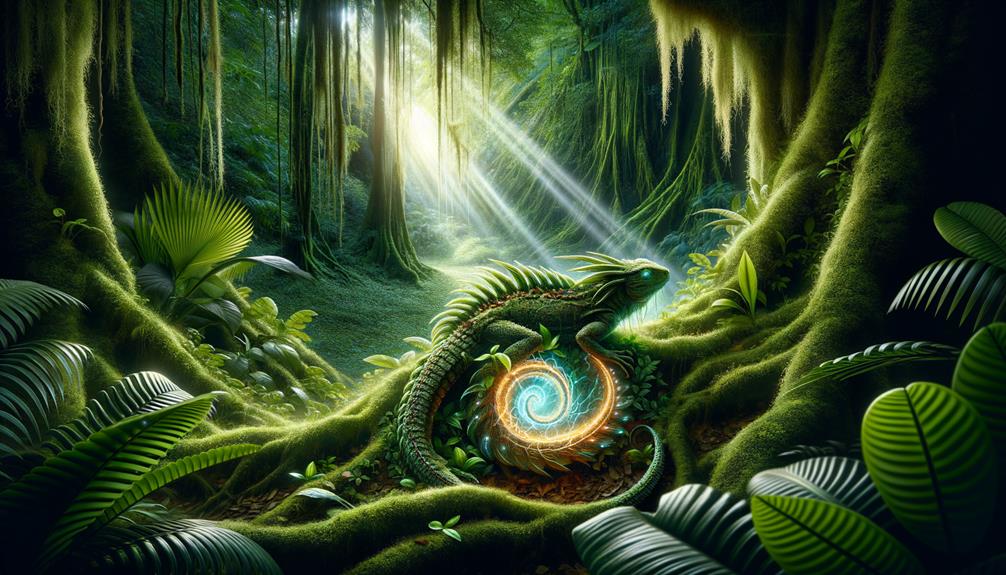Contrary to popular belief, a scorpion's size doesn't always indicate its danger level. Smaller scorpions often pack a more potent punch. Take the Deathstalker, for example. Despite its compact frame, it delivers an extremely powerful sting. On the flip side, larger species like Rock Scorpions generally have less toxic venom, relying instead on their strength and hefty pincers.
But size isn't the only factor to consider. The shape of a scorpion's pincers can also be telling. Smaller pincers often hint at more dangerous venom. This information isn't just trivia; it can help people stay calm in encounters and guide proper treatment if stung.
There's still so much to learn about these intriguing arachnids. Their complex relationship between size, venom potency, and physical attributes continues to fascinate researchers and nature enthusiasts alike.
Understanding Scorpion Venom
Scorpion venom is complex and varies greatly among species. Each scorpion produces a unique mix of neurotoxins, enzymes, and other compounds to immobilize prey and defend itself.
When stung by a scorpion, symptoms can range from mild pain and swelling to severe whole-body reactions. The venom's strength largely determines how bad these symptoms get. Interestingly, a scorpion's size or pincer size doesn't always indicate how potent its venom is. Some smaller scorpions, especially those in the Buthidae family, can deliver a seriously powerful sting.
Kids are more at risk from scorpion stings because of their smaller bodies and developing immune systems. Quick, proper treatment is crucial and often includes antivenom, pain relief, and supportive care. Understanding these facts helps clarify what scorpion venom does and why fast, appropriate medical response to stings matters so much.
This knowledge about scorpion venom comes from careful study of its biochemical makeup and how it affects different organisms. Scientists have spent years figuring out the ins and outs of these venoms, which play a vital role in scorpion survival and can pose significant risks to humans.
The Role of Scorpion Size

Scorpion size plays a significant role in their venom potency and survival strategies. Surprisingly, smaller scorpions often pack a more dangerous punch. Research in the Toxins journal reveals an inverse relationship between scorpion size and venom strength. Take the Deathstalker, for instance – a small but notoriously venomous creature. In contrast, larger species like Rock Scorpions have less potent venom.
Size also influences how scorpions hunt and defend themselves. Bigger scorpions rely on their physical prowess to overpower prey and ward off predators, reducing their need for powerful venom. Smaller scorpions, being more vulnerable, have developed stronger venom as a survival tactic.
Another factor to consider is pincer size. Scorpions with smaller pincers typically have more potent venom, while those with larger pincers don't rely as much on their venom. This balance between pincer size and venom potency showcases how different scorpion species have adapted to thrive in their environments.
Understanding these aspects of scorpion biology helps us appreciate the complexity of these creatures and their place in various ecosystems. It also underscores the importance of caution when encountering scorpions in the wild, regardless of their size.
Misconceptions About Danger

People often misunderstand how dangerous scorpions can be. Many think the biggest ones with large claws pose the most risk. In truth, smaller and medium-sized scorpions often pack the strongest punch. These little guys don't need as much energy to catch prey, so they rely on potent venom instead.
Another common belief is that every scorpion sting leads to severe symptoms. While some can cause serious issues and even land you in the hospital, many only result in mild reactions. The key is knowing which species you're dealing with. Understanding which scorpions have more dangerous venom helps avoid unnecessary panic and ensures proper treatment.
Some folks jump to the conclusion that any scorpion sting requires immediate medical attention. While it's crucial to keep an eye on symptoms, not every sting warrants a trip to the emergency room. Misunderstanding these details can lead to overblown fears and inappropriate responses.
Being informed about these creatures helps put the risks in perspective. It's not about being fearless, but rather understanding the real threats and how to handle them sensibly.
Scorpion Behavior Patterns

Scorpions' survival tactics tell us a lot about how they've adapted to their surroundings. Smaller ones pack a stronger punch with their venom, making up for their lack of size. This means their stings can really pack a wallop, causing more severe reactions in victims.
On the flip side, bigger scorpions don't need such potent venom. They've got the muscle to handle threats and catch prey. It's a bit of a trade-off – smaller scorpions rely on their venom, while the big guys use their strength.
Baby scorpions are another story altogether. They haven't figured out how to control their venom yet, so they tend to go all-out when they sting. As they grow up, they learn to be more strategic about it, using just enough venom to get the job done.
These differences in how scorpions behave show us how clever nature can be. Each species has found its own way to survive, whether it's through powerful venom or sheer physical strength. It's a reminder of how complex and varied the natural world really is.
Safety Tips and Precautions

Knowing how scorpions act is key, but protecting ourselves from their stings is just as crucial. Scorpion stings can cause serious symptoms, especially in kids, and might require hospital care.
- Know Your Local Scorpions: Learning about the scorpions in your area helps gauge how dangerous their venom might be. This info can guide you on how quickly to seek medical help after a sting.
- Keep Them Out: Regularly check and fix cracks in your home's base, doors, and windows. A tidy, clutter-free home means fewer hiding spots for scorpions, making your space safer.
- Gear Up: Put on shoes and gloves when you're outside or in storage areas. Give your clothes, bedding, and shoes a good shake before using them to avoid any surprise scorpion encounters.
These steps not only cut down on the risk of scorpion stings but also match up with global health advice to reduce incidents and their severity. Spotting problems early and taking precautions are vital for enjoying your surroundings without worry.
Frequently Asked Questions
Is It True That the Smaller the Scorpion the Deadlier It Is?
After spending time studying scorpions, I've found that the old saying about smaller ones being more deadly isn't accurate. While some tiny scorpions pack a powerful punch, you can't judge how dangerous they are just by looking at their size. It's best to be careful around all scorpions, no matter how big or small they appear.
What Happens if You Get Stung by a Big Scorpion?
Getting stung by a large scorpion can be a painful experience, but it's rarely life-threatening. You'll likely feel a sharp, intense pain at the site of the sting, followed by swelling, redness, and possibly numbness in the affected area. While these symptoms can be uncomfortable, they typically don't pose serious health risks. However, it's wise to seek medical advice after a scorpion sting, as some people may have severe allergic reactions that require immediate attention. A healthcare professional can assess your condition and provide appropriate treatment if needed.
Are Bigger Scorpions Better?
Common belief might suggest that larger scorpions pose a greater threat, but that's not always the case. In reality, a scorpion's size doesn't necessarily indicate its danger level. The truth is, many smaller scorpions pack a more powerful punch when it comes to venom potency. Take the Deathstalker, for instance – it's not the biggest on the block, but its venom is seriously nasty stuff. Bigger scorpions often rely on their size and strength rather than venom to defend themselves or catch prey. So, next time you spot a scorpion, remember: size isn't everything in the arachnid world.
What Is the Folklore of the Scorpion?
Scorpions have long fascinated people, popping up in stories and myths around the world. These critters often play a double role in folklore, seen as both risky and protective. Some cultures view them as guardians, keeping bad spirits at bay. Others see them as harbingers of doom. This mix of fear and respect shows how we're drawn to things that are powerful and mysterious. The scorpion's reputation in stories reflects our own complicated relationship with nature – we're in awe of its strength, but also wary of its potential danger. It's this blend of admiration and caution that keeps the scorpion a popular figure in tales passed down through generations.



